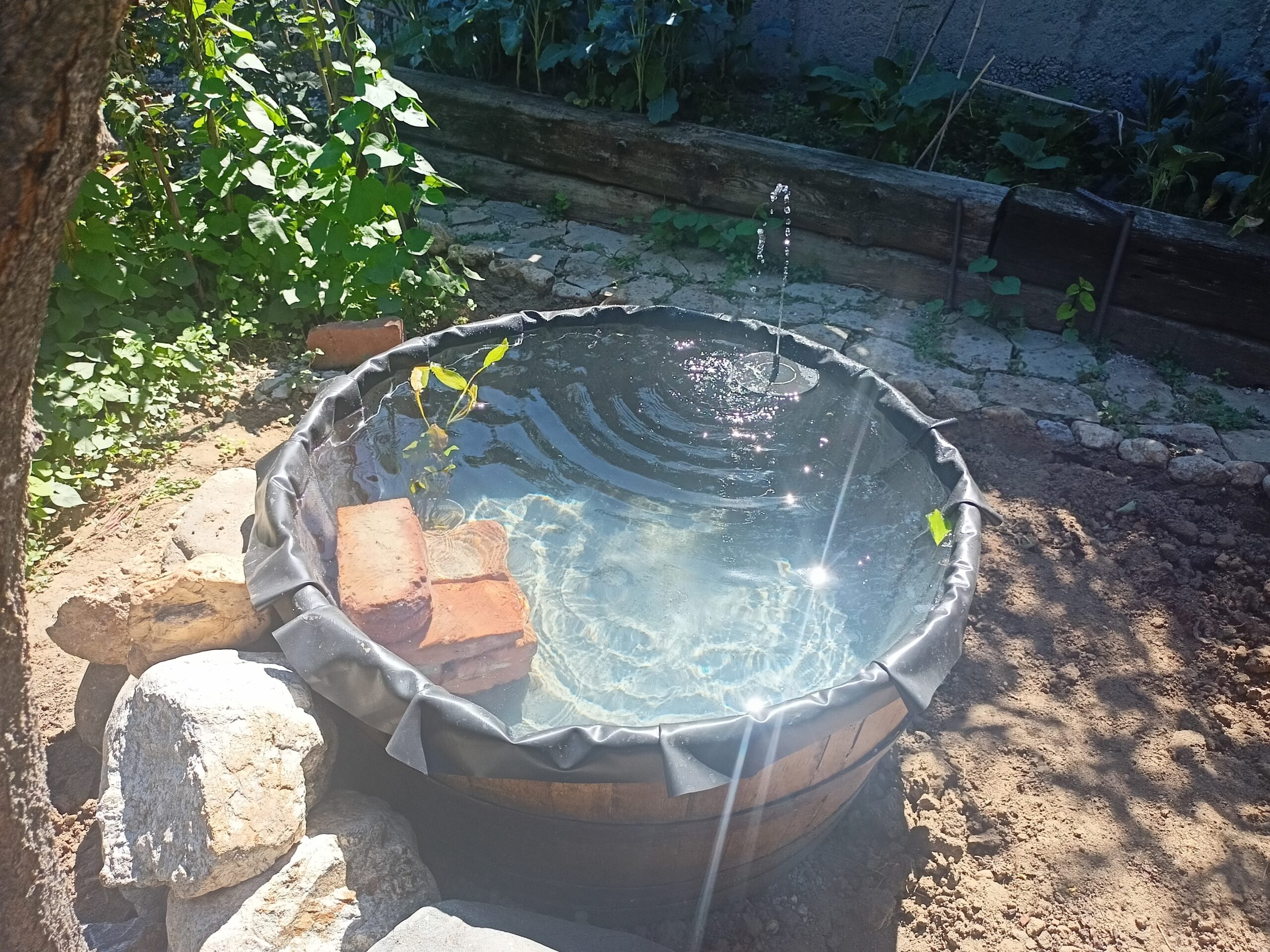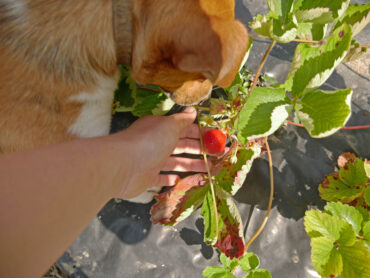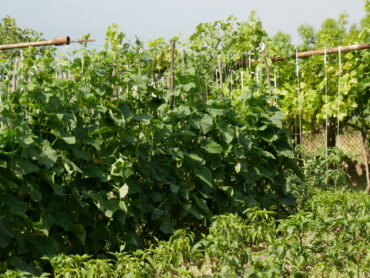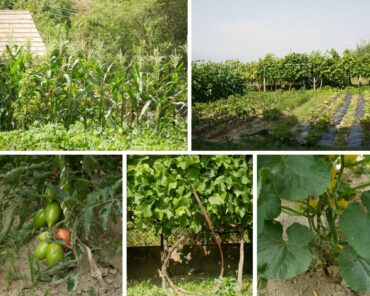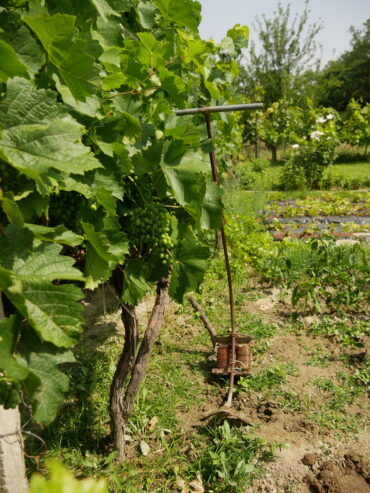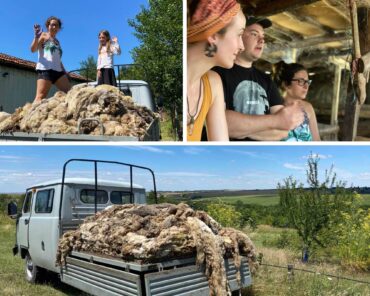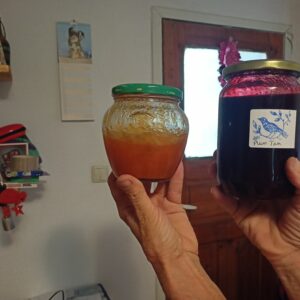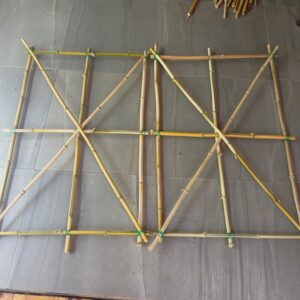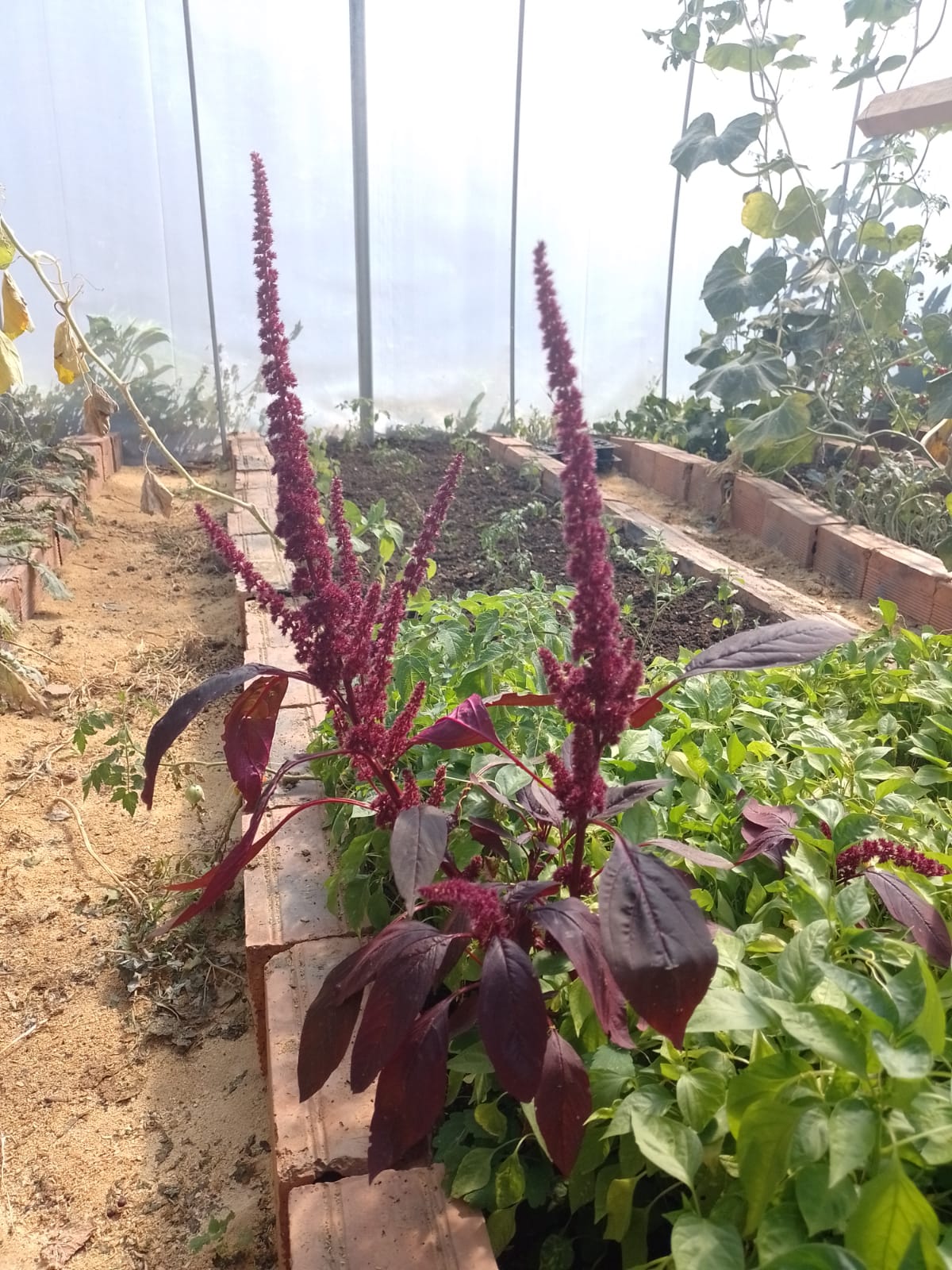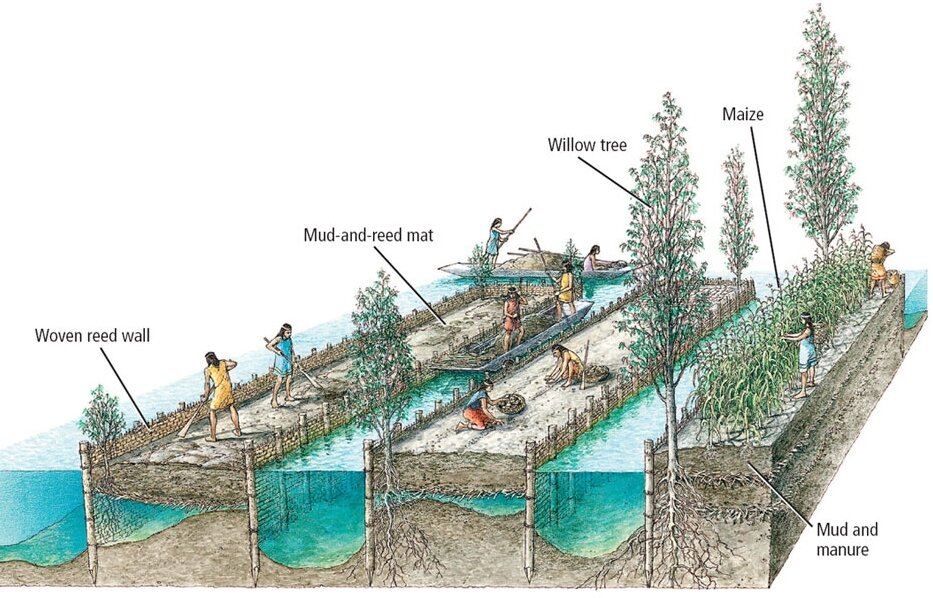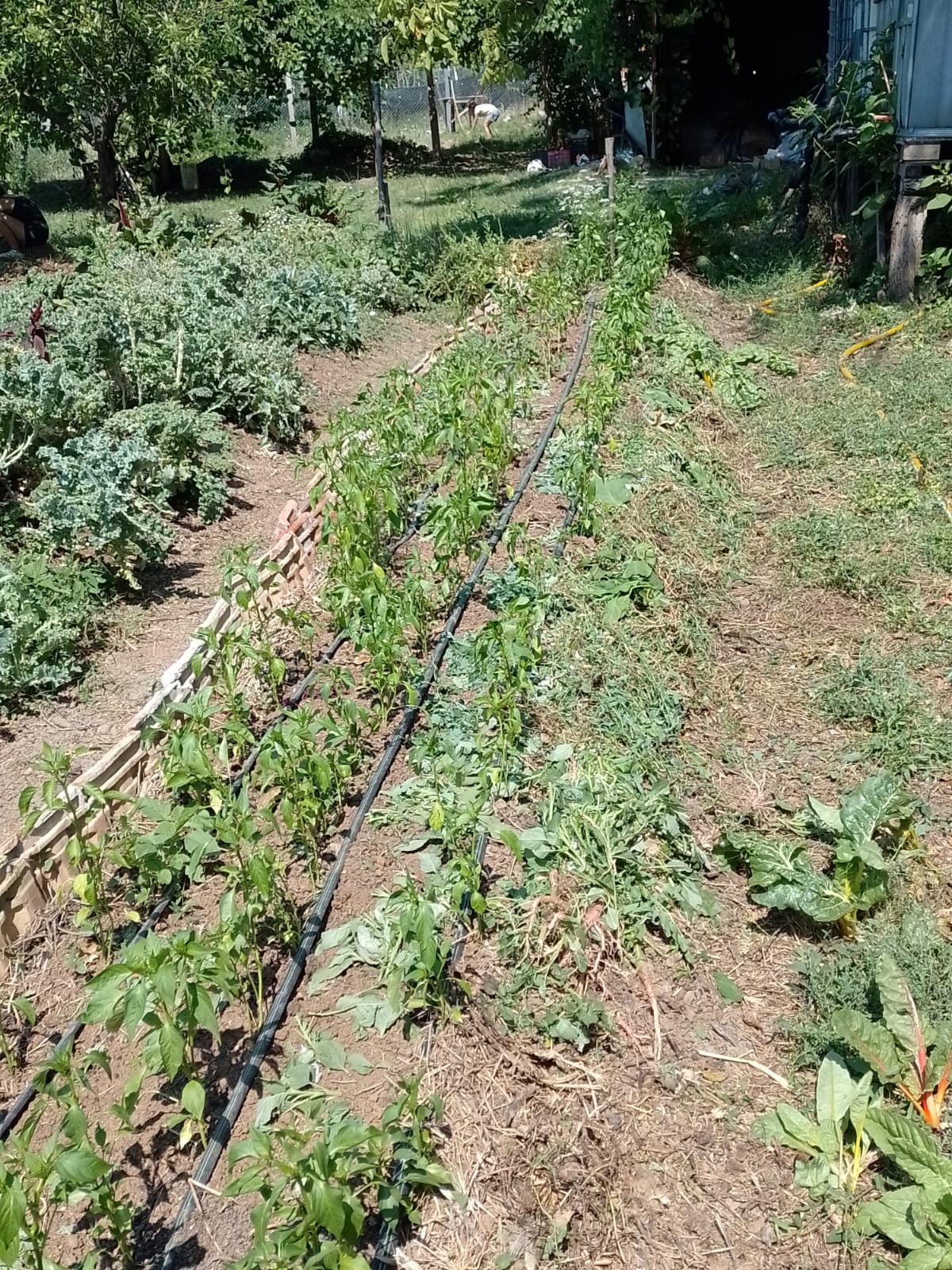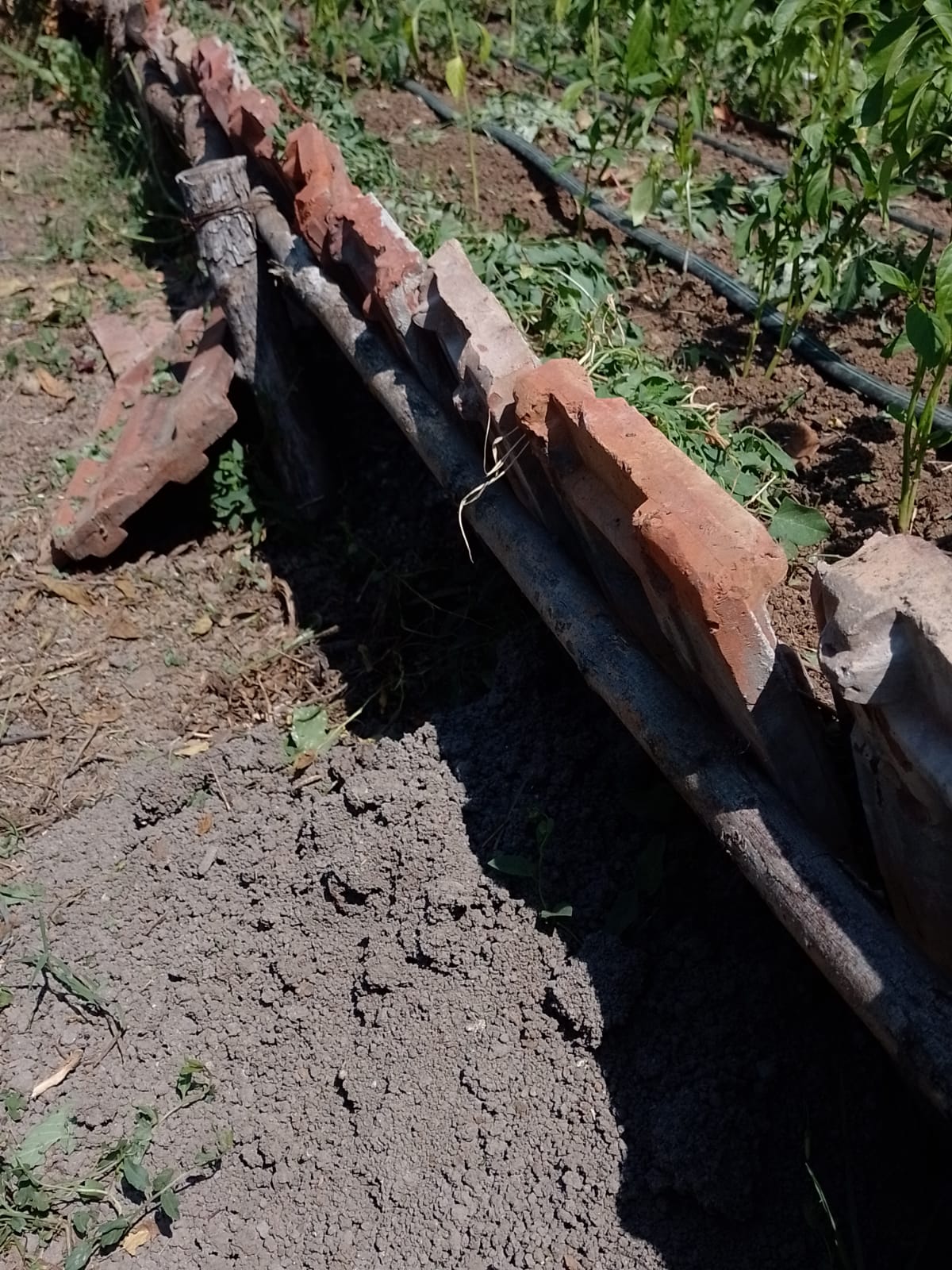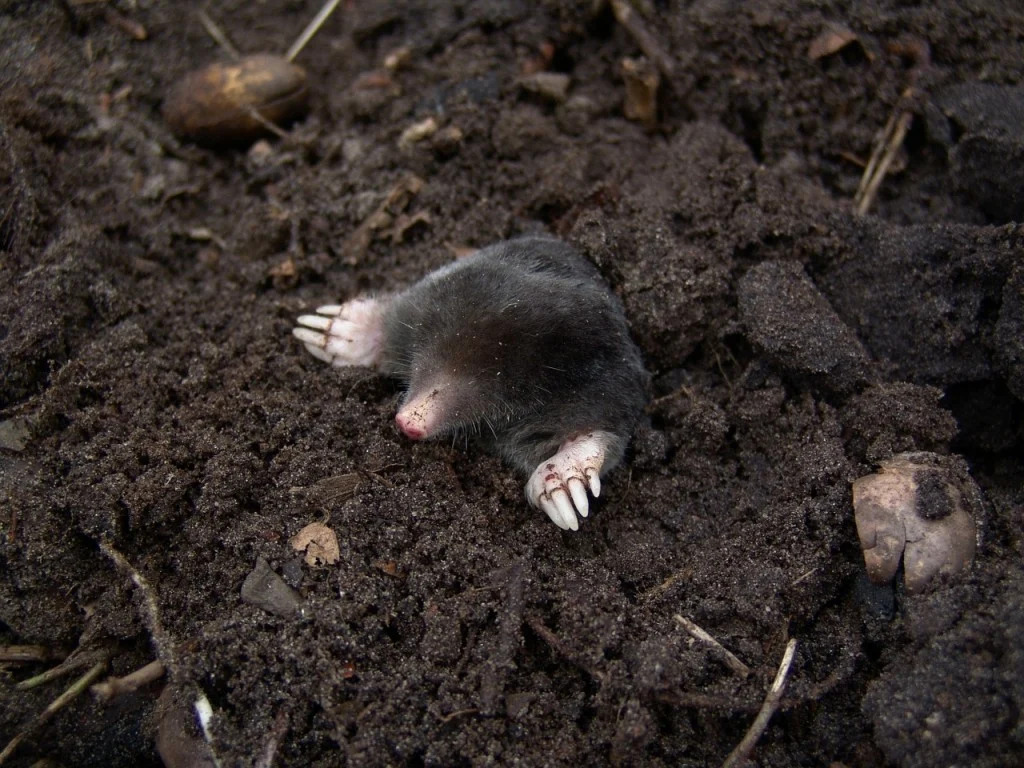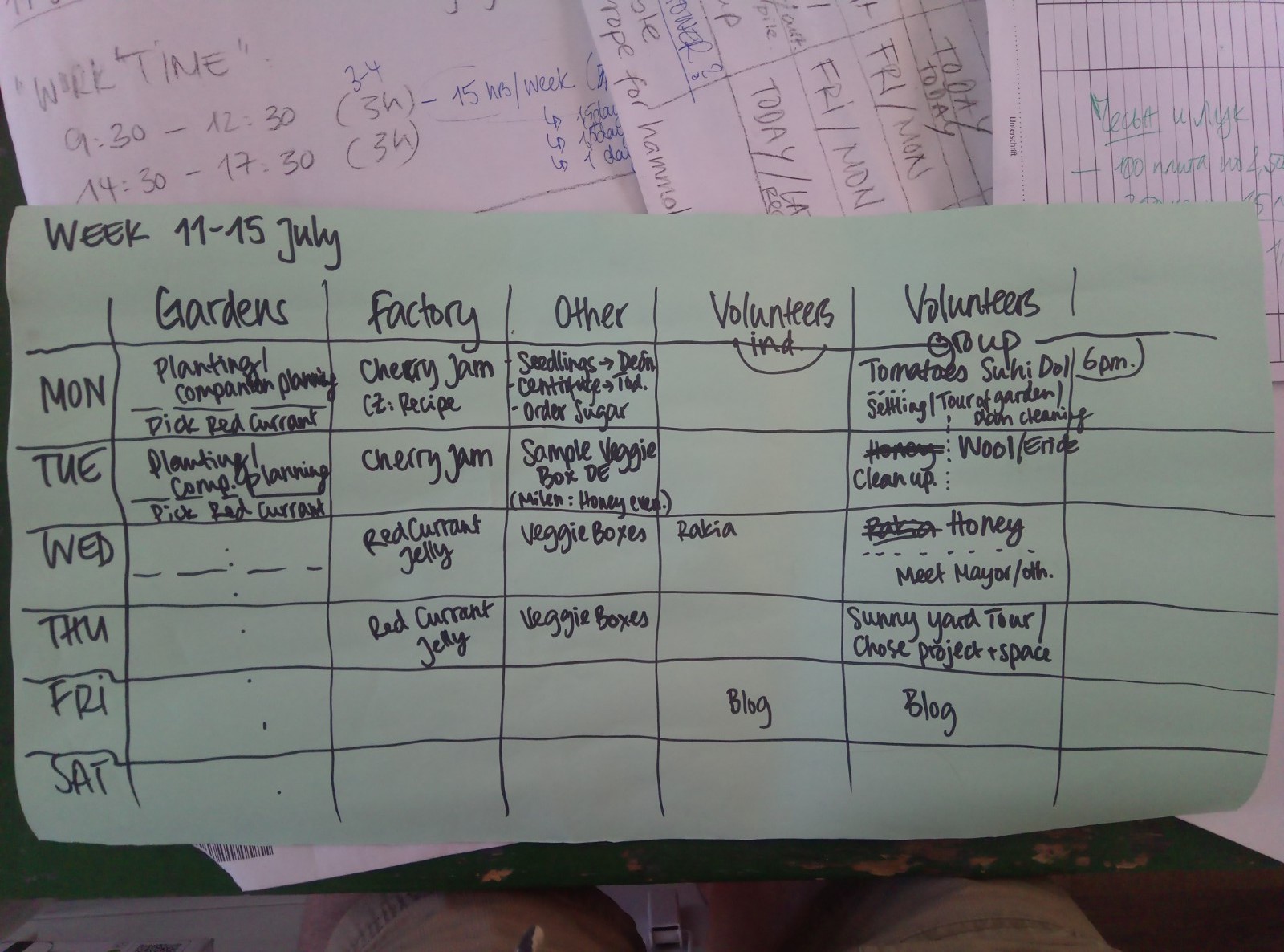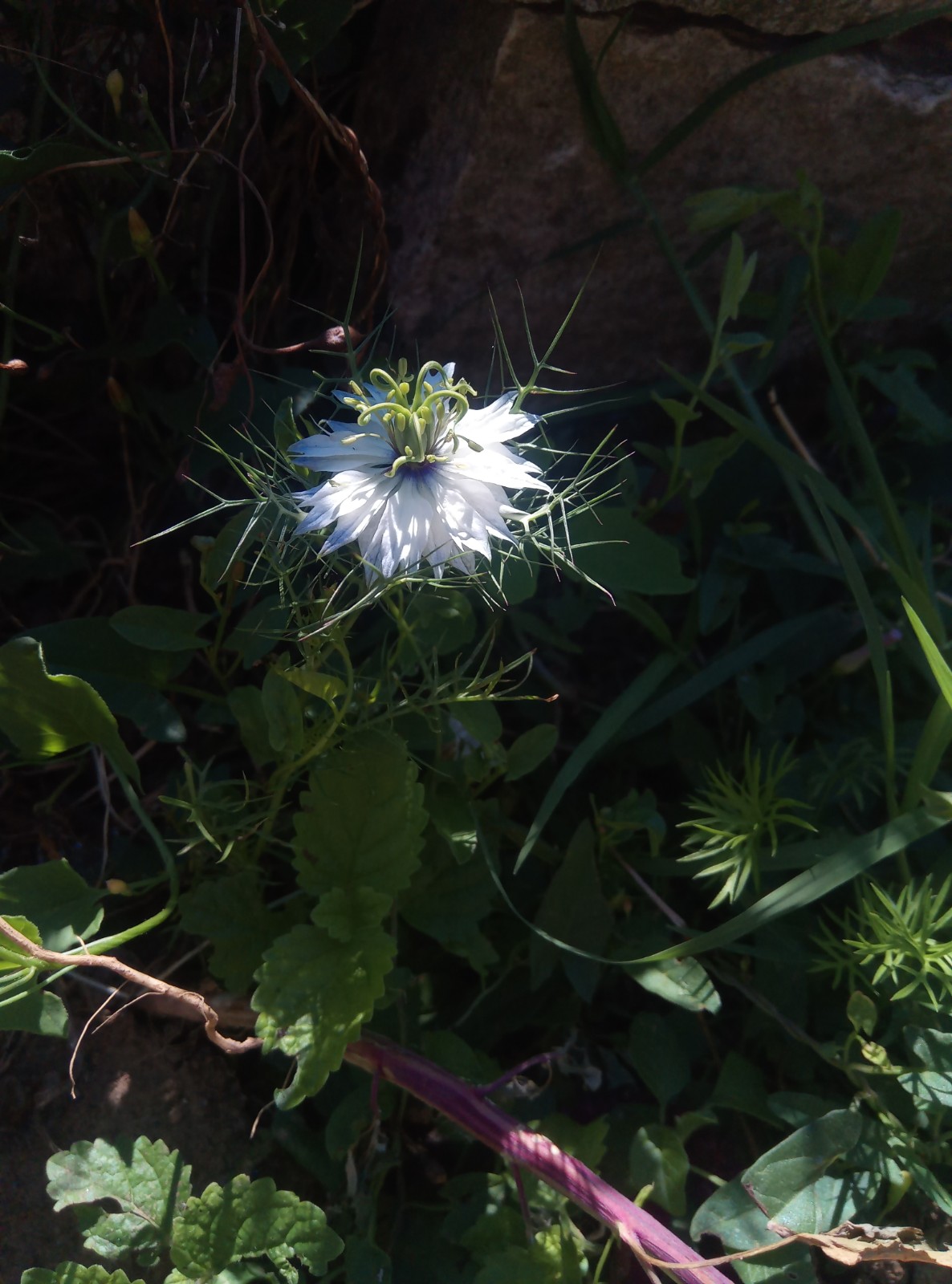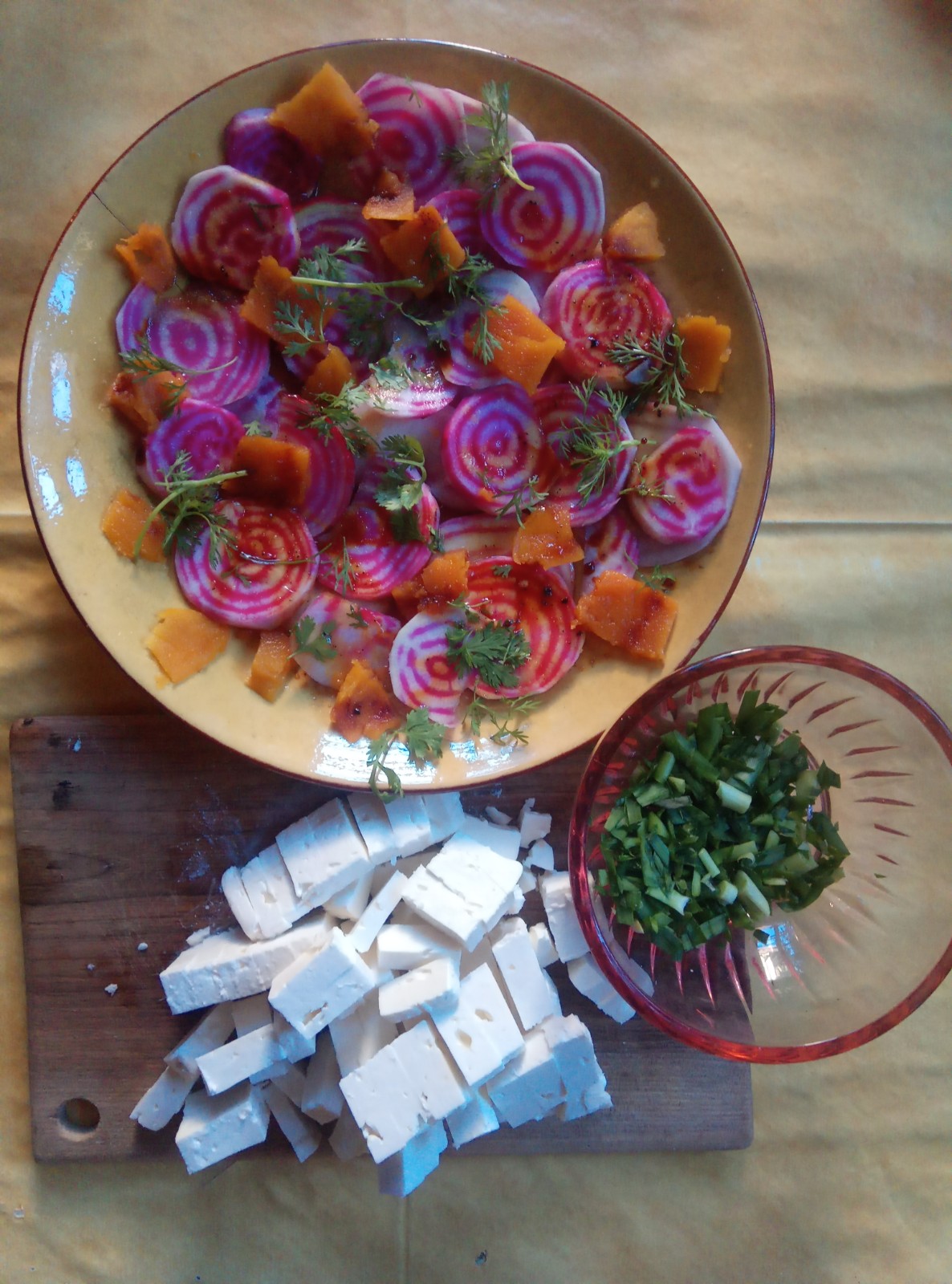Vyara:
Hello, hello! Long time no blog, but even the best bloggers need some time off! he-he
On one of my last days in Kromidovo I helped a local couple with some chores in their garden and chickens. In my last blog entry I did not have the space to include my experience of the meeting and most importantly the gardening tips they shared with me. So, I feel like this week, while we are still settling in Venets, is the best time to introduced them to you.
I met Georgi and Roza through local people, they are the ‘’egg suppliers of the village’’ as they like to call themselves. They have about 60 chickens, and they sell the eggs to other locals and passers by like us. Their garden overlooks the Belacitsa mountains, with this view, they say, you can never get tired from the work in the garden. They are extremely kind people, offered me coffee before we started working on the garden and while we were drinking it we shared our life stories and gardening experiences.
Here are a few things they told me:
- There are year-round strawberry plant varieties, which produce a few strawberries throughout the summer season and there are seasonal varieties, which give strawberries only once per year. This is an important thing to keep in mind, when you start planning your garden, and fruit and vegetable production;
Picking strawberries at the end of June, why not?
- They take turns in sweeping the chicken yard every morning and collecting the manure for later use. Every autumn they spread it in the garden and let it to decompose during the winter. When it comes to protecting the chickens from predators, dogs are their best friends;
- Summer Savory likes open spaces, it doesn`t grow well in shady spots;
- They say that they are the only people in the village, who let their tomatoes grow high, everybody else keeps their tomatoes relatively low. In this extremely hot climate, they need to put green netting above the tomato plants, to stop them from drying out;
- Back in the days people used to let their cucumbers crawl on the ground, the plants were not tied to strings and lifted upwards. Keeping the cucumbers off the ground is a relatively new technique of growing. When vegetable growers started growing produce in greenhouses, they realized the need of having more plants trailing upwards to create more space. The produce is cleaner, easier to pick and you don`t have the risk of stepping over the new shoots. Also having the plants lifted off the ground lowers the chances of powdery mildew, because there is more aeration;
The cucumber forest!
- Georgi and Rosa revealed another secret from the garden, and apparently it is a well-known one: you sow okra when the Acacia trees blossom. The first okra seeds Rosa bought from the shop and then she started saving the okra seeds herself;
A few pictures from Georgi and Roza`s garden
They rely heavily on their garden and try to grow anything they can. There is no point in going to the local markets if you can grow it yourself, Roza says. They are strongly against pesticides and chemical fertilizers, they even stopped buying cherries from the market, which they love, because the cherries are heavily sprayed. They have noticed that the less people are working in the vineyards the more the vineyard owners spray against weeds and harmful insects. With this decline in manual labor in the last few years, there has been a decline in the insect population, there are no bees, wasps and ladybugs.
They also reminded me of an interesting fact from the past, people used to grow vegetables not only in their gardens, but also on the fields around the villages. They used to call them бустани or bustani. Nowadays, the fields around Kromidovo are monoculture vineyards with zero biodiversity.
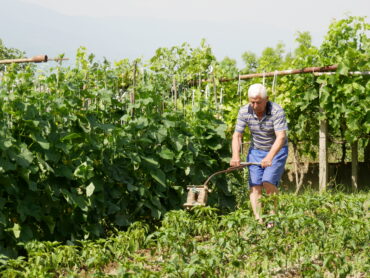
The plowing tool, it looks like a giant hook with a handle. I am still unsure how to properly use it,
Back to here and now, I am in Venets with Mali and Renzo and this week we had the pleasure of going to Erik`s sheep farm and artisanal cheese (https://www.facebook.com/Ericksheepcheese/). It`s a lovely little farm, which the owner (Erik) inherited from his grandparents. We went there not only to buy great cheese, but also to collect wool for mulching our trees and vegetables.
A day devoted to wool 🙂
I am a huge advocate of sourcing materials locally, be it wood, wool or vegetables and making use of everything around us. The more miles a certain product travels, the bigger its carbon footprint and harmful effects on the planet. When Catherin told me that she gets wool for mulching from a farm near Pleven, I was pleasantly surprised, because I knew that most farmers burn it, as they don`t have any use for it.
The first time I learnt about wool mulching was at a festival in Bulgaria in 2021. There was a lady, who recently moved back to Bulgarian with her family, she was no horticulturist or expert in wool processing, she just wanted to spread the word of the benefits of mulching with wool and fertilizing with wool pallets. Since this improvised lecture I am a huge supporter of mulching with wool and I recommend it to all my gardener friends.
Before I started this blog post I had to do a little research and call my most trusted resources aka. my grandmothers to clear up a few things. I was wondering why most farmers throw away or burn the wool, which they shear from their sheep, and it turned out that there are different types of wool and not every wool can be turned into woolen winter socks. Short fiber wool can not be turned into yarn, because as the name suggests the fibers are very short and cannot be spinned. There is the long fiber wool, which is best for yarn and can be used as a textile product. However, you cannot use the wool from the whole sheep, the wool from the hind sides and the belly of the sheep is often discolored and is what people in the textile business call ”waste wool”, it is thinner and not considered as valuable.
And when it comes to mulching, wool offers many benefits:
-it slowly releases nitrogen along with other minerals into the soil ;
-retains moisture, as it covers the ground and doesn`t allow evaporation;
-regulates the temperature of the soil, retains more heat during cold winters and keeps the roots warmer and can help keep crops alive past their normal growing point;
-stops weeds from sprouting;
-compared to straw, wool biodegrades slower;
Many thanks for reading this and if mulching with wool sounds tempting, you should consider how easy it would be to obtain it and what other resource are available closer to you first. You might be able to find straw and grass clippings easier, be creative and you will be surprised with the result 🙂
Until next time!
Ewan:
Hello hello! I’m back after a short break, and have been doing some really interesting things I’d love to tell you all about 🙂
It’s getting really hot down here in the far southwest of Bulgaria, I’ve therefore been spending quite a bit of time watering the gardens recently. To try and not waste water, we don’t water all the plants, only those that particularly need it. For example, young trees under about two years old and young vegetable seedlings and fruit and vegetable when it’s starting to produce. Also, we water early in the morning or in the evening, when the sun isn’t so harsh.
This time of year also brings an abundance of wild fruit on the local trees, I was amazed to find so many delicious looking fruits that no one else had picked yet! Some of the more common ones around here include plums and apricots. After picking several kilos of each of the aforementioned fruits, we realised we weren’t eating them quick enough, and they were starting to become overripe. So, as not to waste the fruit we had already picked we decided to make some jam and chutney, you can see the results in the images 🙂 I also attempted to make sun dried apricots, but typically, after weeks of wall to wall sunshine, the days after I prepared the fruits to be dried, it rained for days!
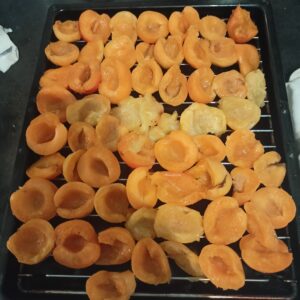
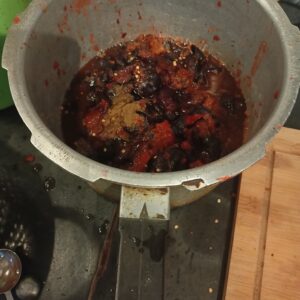
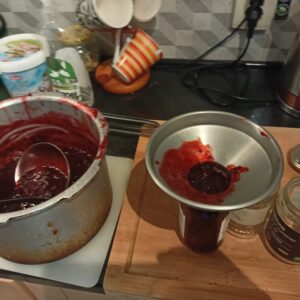
Now time for an update on the barrels in the dry garden! The pond liner finally arrived in the post, so we filled one of the barrels with water, next we are going to add a variety of pond plants that will hopefully attract lots of wildlife. On the topic of reusing old recycled materials, we spotted a tire when we were at the reservoir one day. So, we decided to bring it back to the campsite, where we had a few others that had been previously collected. We then stacked them on top of each other to create a small compost in the dry garden.
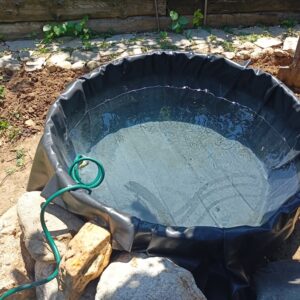
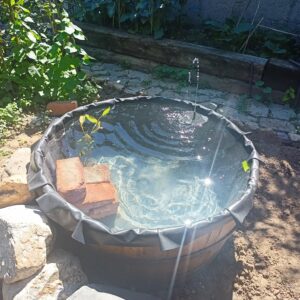
On to another project I’ve spoken about before, the new side gate and hop garden. Wanting to use as many recycled materials as we could, we decided to make a trellis out of bamboo from the garden. Unfortunately, it didn’t quite fit in the gap, so we are still in the process of creating something different to fill the space. Hopefully I’ll have some pictures of that to show you soon. That’s all from me, see you next time 🙂
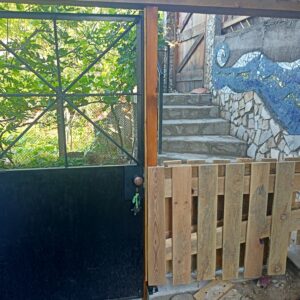
Renzo:
Amidst the huge diversity of plants in Venets, I was captivated by one of them for its peculiar color and beauty. So I started an investigation about the purple amaranth (Lat. Amaranthus cruentus), which I would like to share with you.
This plant is a great source of vitamins A, D, C, B1, B2, B3, D, and K, proteins and minerals, 8 of the 9 essential amino acids, fiber and calcium (twice as much as milk).
To the ancient cultures of Central America and Mexico, amaranth was a seen as sacred plant, as its color was a symbolic reference to the sun, and was used in ceremonies. Its resistance to drought made it a great pick for cultivation.
Among the peoples of Mexico there was a particular form of cultivation, this was the use of chinampas: rafts of sticks, branches and reeds, with earth, leaves, remains of vegetables and fruits. Fixed to the bottom of the lake by some trees including the willow. Once the raft was fixed, the amaranth and other fruits and vegetables were planted. In this way, the space in the waters was efficiently used. At the time of the arrival of the colonisers, though, the cultivation of amaranth got prohibited like quinoa because of its religious uses.
In the Sunny Yard, one of Venets’ lands, we were removing weeds, which were then used as mulch. During this activity, I found some mounds of earth that were made by moles. These little animals are not very loved by farmers, because it is believed that they destroy the soil and eat the crops.
When looking for information on them, I found that the work carried out by the moles is to aerate the earth, nourish it, and facilitate the drainage of water, in addition to eating flies, slugs, larvae, etc.
We added this soil onto the beds together with the remains of the grapes and plums with which they had made rakia (a traditional strong Balkanic drink). According to Catherine this byproduct is a very good fertilizer for crops.
(source: https://hartley-botanic.com/magazine/801409421-moles-can-benefit-gardeners/)
Ciao! 🙂
Mali:
This week I was feeling physically a bit low in energy, but still managed to join the various activities we dived into, be it in a slower pace. During our Monday morning meeting Catherine created a schedule with us, to prioritize on some of the week’s activities for her and for us altogether (see photo).
It was time for Catherine to show us another piece of land that is part of her project, called the Sunny Yard, as Renzo already mentioned it above. The name speaks for itself, a very sunny spot in the middle of the village, where Catherine is growing various annual and perennial vegetables throughout the year on raised beds. When we visited, she showed us a pile of biochar that they had made before to enrich the soil, a big compost heap and with pride she also showed us some vibrant malabar spinach plants climbing up its way on the fence (see photo). 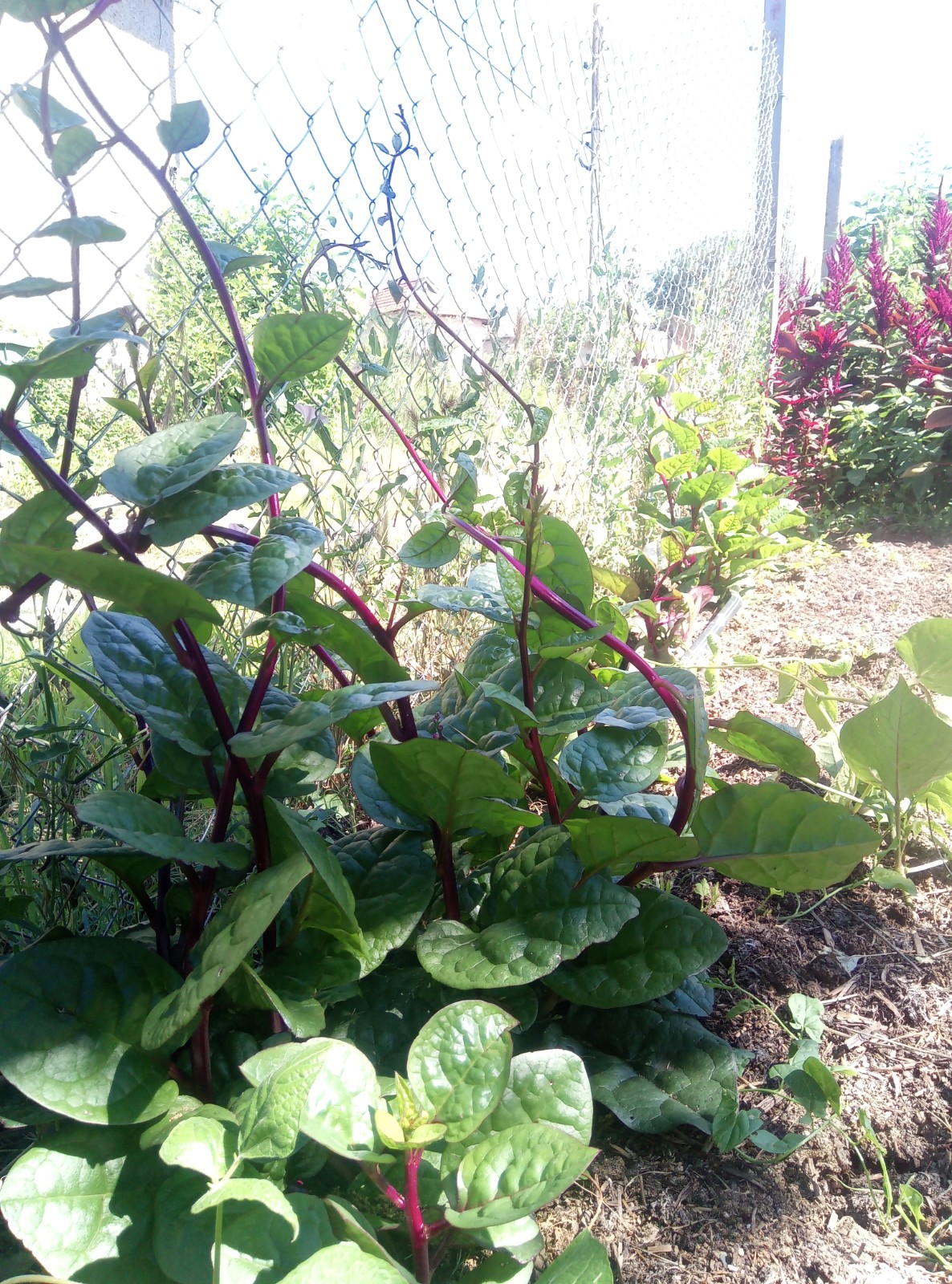
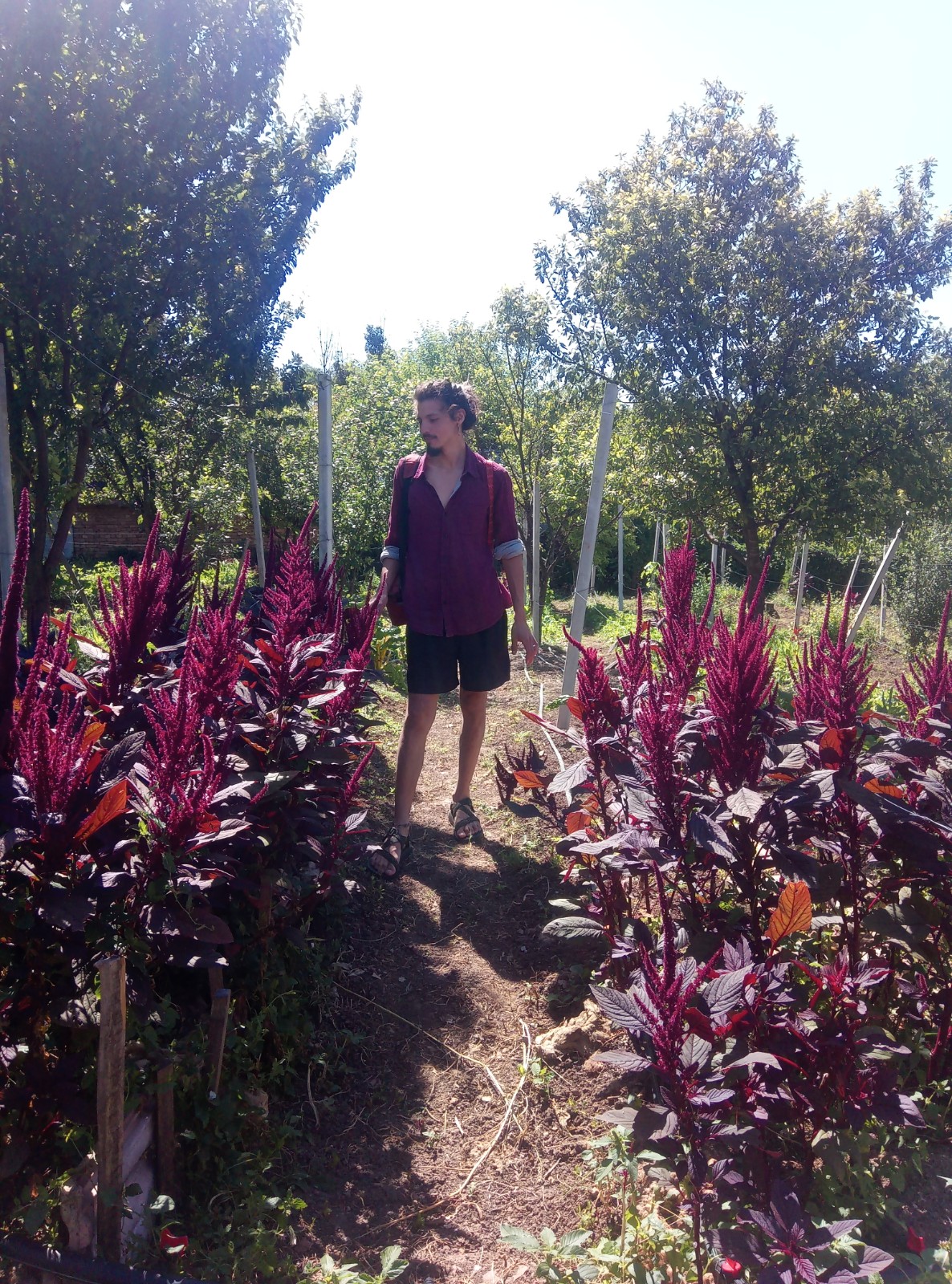
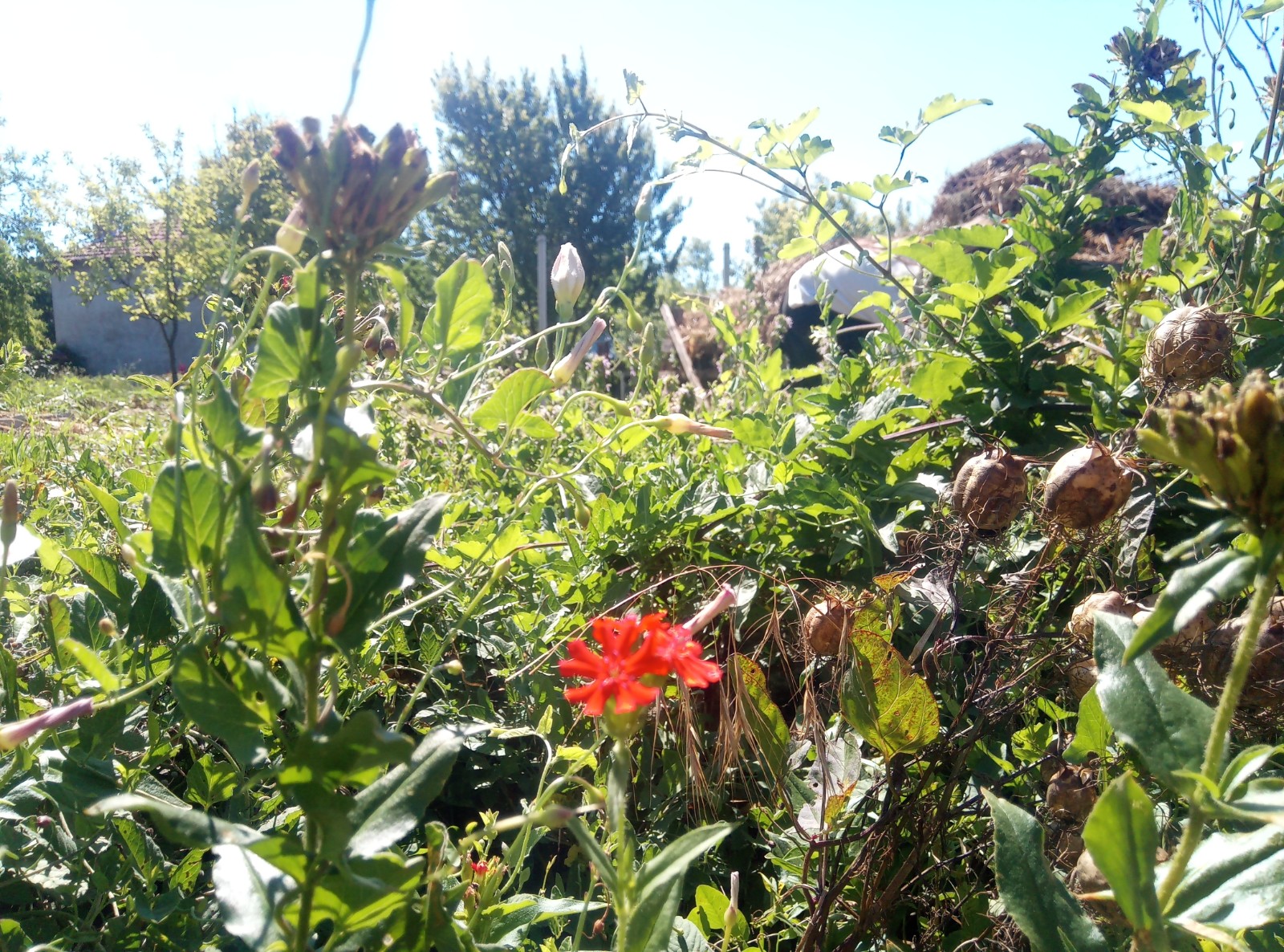
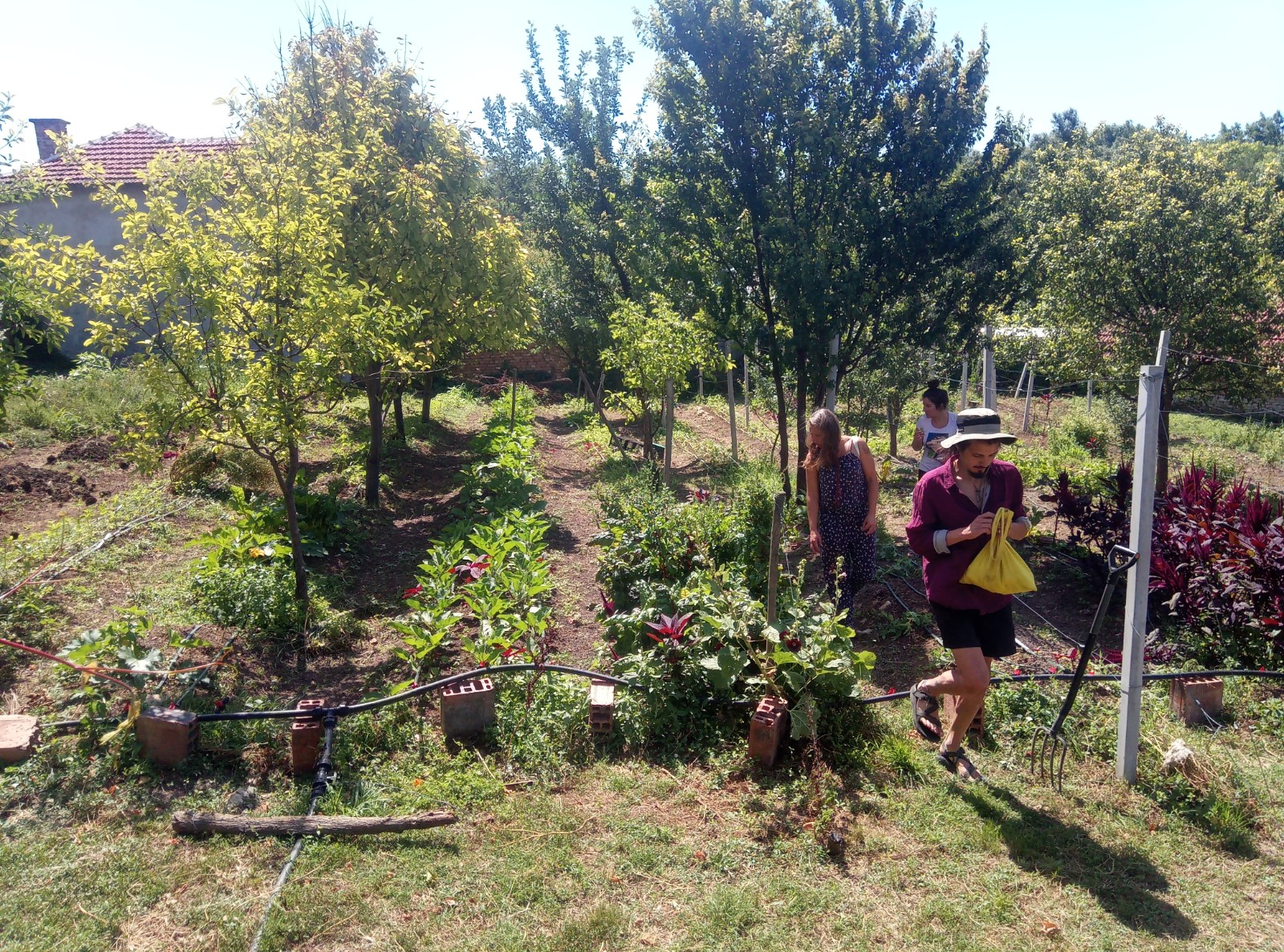
One of the evenings of sharing a dinner with everyone, these palette of wonderful colours appeared on our plates from freshly harvested produce off the land including the mesmerizing chioggia beet (see photo). In my next post I will tell you about my upcoming teaching adventure in a country that I have never visited before in my life… Moldova!

